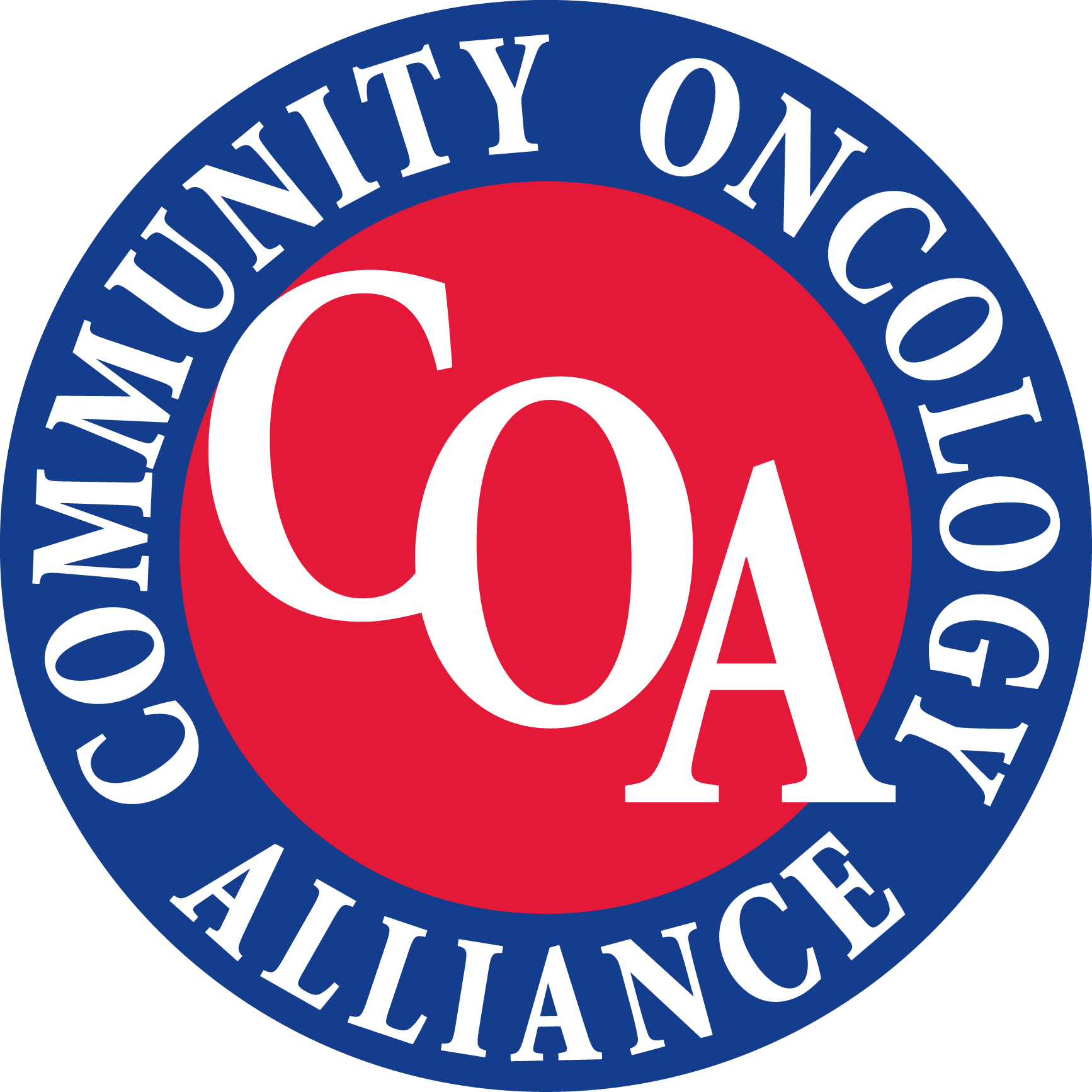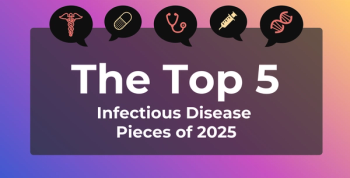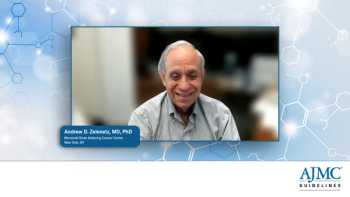
- February 2025
- Volume 31
- Issue Spec. No. 2
- Pages: SP109-SP111
As COA President, Patt Promotes Advocacy: “Each of Us Holds an Important Part of the Story”

Key Takeaways
- Debra Patt leads COA with a focus on empowering stakeholders and advocating for policy reforms, including PBM reform and prior authorization issues.
- AI is seen as a transformative tool in oncology, offering efficiencies but requiring careful management of risks like bias and data fabrication.
In an interview, Debra Patt, MD, PhD, MBA, FASCO, discusses the priorities of the Community Oncology Alliance as she starts her term as president.
To say that Debra Patt, MD, PhD, MBA, FASCO, wears many hats would be an understatement. The longtime hematologist/oncologist, who practices in Austin, Texas, serves as executive vice president for Texas Oncology and medical director for public policy within The US Oncology Network. She is a professor at Dell Medical School at The University of Texas at Austin, where she received her bachelor’s degree.
In 2023, Patt joined the board of directors for the American Society of Clinical Oncology, chairing the artificial intelligence (AI) task force, and was the first editor in chief of JCO Clinical Cancer Informatics. In January, after several years on the executive committee of the Community Oncology Alliance (COA), Patt became president of the organization that represents independent community oncology practices and physicians.1,2
For years before becoming president, Patt testified before the US Congress on behalf of COA, making considerable headway on issues affecting community oncology. In everyday terms, she shared the harmful effects of vertical integration and resulting practices by pharmacy benefit managers (PBMs), sometimes called the “middleman” in the US health care system. In an October 2023 appearance at a hearing of a House Energy and Commerce subcommittee, she was able to connect the dots between rising Medicare premiums and $9 billion that had been repaid to hospitals due to a US Supreme Court ruling on the 340B program.3 In a separate visit, she offered powerful testimony about being told to wait, possibly up to 6 weeks, for a peer-to-peer consult regarding her 40-year-old patient with breast cancer, who was a candidate for an innovative treatment called monacHER.4 Members of Congress were hearing directly from an oncologist how prior authorization can threaten a patient’s life.
“It’s incredibly frustrating for her—and for patients more broadly—because they feel like they don’t have any control over what’s going to happen, what their journey is going to look like,” Patt later told the American Medical Association.4
After years of advocacy, Patt becomes COA president just as bipartisan support is peaking for several of the most important items in the group’s legislative agenda. At the end of the last Congress, supporters of PBM reform succeeded in getting provisions into the original continuing resolution that was headed for then-President Joseph R. Biden’s desk, before then–President-elect Donald J. Trump called for a scaled-back resolution.5 Still, desire for PBM reform has not waned.6 Patt’s theme for the upcoming COA Conference, and for her tenure as COA president, “Empower and Advocate,” speaks to the need to maintain that momentum. Patt’s theme aligns with COA’s since released document, the “
A board member for Evidence-Based Oncology (EBO), she spoke with EBO in an extended interview about her plans as COA president as well as several key issues facing community oncology practices.
This interview has been lightly edited for clarity.
EBO: Can you discuss the theme, “Empower and Advocate”—the idea that empowering colleagues to advocate really extends to everyone?
Patt: I think COA does a great job of aggregating many different individuals [who] touch the community oncology ecosystem—doctors, nurses, administrators, pharmacists, advanced practice providers, patients, navigators—and so there’s an important role for everyone to be empowered and to advocate. We see a lot of challenges in public policy that pose a risk to community oncology. I think heightening awareness for various stakeholders is really important, as we each hold an important part of the story, sort of like puzzle pieces that you put together. Each of us holds an important part of the story about how to make a great community oncology practice. As an example, here in Texas, I serve as a vice president of Texas Oncology; frequently we have public policy meetings in our districts, and so either at a cancer center or at a local site, we will have a meal or a presentation with elected officials and have different people there—with patients, social workers, practice administrators and leaders, pharmacists, nurses, and doctors—and we each hold different pieces of how patients with cancer struggle in their communities, and what policy changes we could consider to try to make it better for patients.
There are some obviously loud, resounding themes there that you’ve heard from COA before about things that can enhance community oncology. But it’s really useful, actually, to hear everyone’s perspective. As a doctor, I have one perspective about things such as prior authorization—the ability to give patients the first therapy that I want for them instead of fail-first step therapy limitations. [These] are great examples of things that I feel day to day. Or the issues of network inadequacy, as I try to call different primary care providers and beg for them to see my patients, because they’re having a difficult time finding a primary care provider. Those are things [that I feel as the doctor], but there are different ways in which patients and patient advocates see the challenges in community cancer care; it may be in navigating their co-pay accumulator, it may be in getting their out-of-pocket costs reduced. It may be in managing the balance between their work and the therapy that they’re getting. And again, social workers will look at things differently. Administrators will look at it differently.
I think COA does a great job of aligning various stakeholders and educating them on how to advocate effectively and trying to bring us all together so that we all act as a team.
EBO: Let’s discuss the policy agenda, because that’s a big part of what COA hopes to advance this year. As we have this discussion (January 10, 2025), knowing how close advocates for PBM reform came in the last session, what do you look forward to this spring?
Patt: I think that you are going to see a lot more advocacy and public policy from COA this year. It’s always our strong suit, but you’re going to see it even stronger and more coordinated as we think about our Prescription [for Health Care Reform] and engage with some new stakeholders, as the new administration comes into office and sets their priorities. I think what we’ve learned from the prior Trump administration is that there is an interest in managing “the middleman” or cutting out the middleman in care delivery. To me, that speaks to a prioritization on reining in pharmacy benefit managers—things that facilitate transparency and accountability, I think, make a big difference, and I suspect that will be a legislative priority this next year. I suspect that will be a priority for the administration in the next year.
In a similar vein, as you think about where you have costs in the health care ecosystem, the Trump administration previously did want to make changes in the 340B reimbursement. During the first Trump administration, there was a decrease in reimbursement to 340B programs. Now, that was not upheld at the Supreme Court level, but the Supreme Court’s decision dictated that they required data to really think about reimbursement appropriately. We now have those data, so it would seem reasonable, for me, for the Trump administration to revisit the data and try to understand how that could influence 340B reimbursement, and particular action as it relates to child sites [off-site clinics not attached to the eligible hospital]. I believe 340B represented $126 billion of drug purchasing last year,7 so it’s a tremendous cost to the health care ecosystem.
Now, one thing about health care that I think is complicated is that you can’t change everything perfectly so quickly. Because even if you think the reimbursement for 340B is inappropriate, it’s hard to change everything all at once, because there are important parts of the ecosystem that have become dependent upon those finances. And so, I think it’s going to take a really careful and thoughtful consideration about how to rein that [spending] in in a meaningful way, and how to create sustainable solutions.
Another area for all of medicine is in physician reimbursement. We’ve seen over the [past] 20 years a decrease of 28% in physician reimbursement,8 while there’s been an increase in inflation and other things; it’s created an issue of network inadequacy, where some doctors are not able [to accept patients] or some patients are not able to see doctors if they have Medicare as their primary payer. And we don’t want that for American seniors. We want them to be able to access good primary care, good specialty care. There has to be a doc fix that’s discussed early on in order to have a sustainable health care system.
EBO: You’ve also been very outspoken on the issue of prior authorization. We’ve seen a lot of activity on this issue in the United States; in the past few months, doctors have been going on social media and talking about experiences with their own patients with prior authorization. Has prior authorization reached a tipping point where something has to give?
Patt: Yes, I do think it has. Utilization management, or how insurance companies manage utilization, is important and complicated. But I do think that there are ebbs and flows to this, and it has definitely swayed so much that it is, right now, an inappropriate barrier and hurdle to patient care. So, we need the pendulum to swing in the other direction, because it’s too prohibitive for patients to get the care that they need. This means that even though my reimbursement has declined, I have to employ people in my office just to manage the prior authorization. I have to write separate letters. Just last week, I was writing [a letter] for a pill for a patient with a high-risk breast cancer, and it’s clearly FDA-approved; she clearly meets all of the inclusion criteria. This is on [National Comprehensive Cancer Network] guidelines.
And I got pushback from the insurance and initial denial, and they need a letter of medical necessity. So, I wrote the letter of medical necessity, and my nurse spent several hours managing the appeal, and probably it will ultimately get approved. But the barrier of them doing an initial denial will cause some people to not get that therapy, and it’s inappropriate for us to spend additional time and effort on doing that because that’s time and effort that I’m not spending with other patients [who] need my service.
EBO: Let’s talk about the Stark Law. I know COA has been working on this issue for a while—to advocate for oncology practices with pharmacies to be able to deliver prescriptions through the mail or give them to a caregiver who picks them up at the practice. There have been efforts at legislation.9 Since this problem arose due to an interpretation of the statute under the Biden CMS administrator, with the change of administration, is there a possibility of a regulatory fix?
Patt: You’re talking about the fact that during the COVID[-19] pandemic, and even before that, we were all giving mail-order pills to patients. Frequently these are oral oncolytics; they represent about a third of the cancer therapies that we give today. And when patients could not come to the office and pick them up, we were able to send them by mail to patients, so they could take them to control their cancer. And that’s really helpful. Again, I practice in the great state of Texas, and we see a lot of rural Texans in our cancer centers. For them to not have to come back to pick up a medication, it’s really useful.
And if they’re at home, then they can’t send someone else to do it, because after May of 2023, CMS put out an FAQ that said it’s a Stark Law violation to send patients oral oncolytics in the mail to their home. And so, our ability to do that has gone away. We had a lot of success in passing legislation to address this in the last session. Rep Diana Harshbarger’s [R, Tennessee] bill was passed in the [US] House [of Representatives] and then went over to the [US] Senate, and there was some discussion about including it in the continuing resolution. Ultimately, there just wasn’t enough time to get it across the finish line. I think that there is bipartisan and bicameral support for the legislation, so I think it’s going to need to be reintroduced. It’s really important, particularly for rural Americans who require pills to treat their cancer.
EBO: In general, there seems to be a lot of interest in the concerns of rural medicine generally. And now we have a Senate finance chairman from Idaho [Sen Mike Crapo (R, Idaho)]. Are you optimistic that these concerns are going to receive a little more attention than they have in the past?
Patt: Yes, I am optimistic. Health care is complicated. I think that perspectives can be incredibly useful, especially for this issue.
EBO: I also want to ask you about a question about AI. You’ve spent most of your career working with technology in practice and now with AI in particular. Can you discuss the promise of AI in oncology but also the equity issues? How do we balance the potential while also ensuring that some practices are not left behind?
Patt: I’m so glad you asked. AI will touch every aspect of care delivery, from how we answer the phones, to how we communicate with patients, to how patients get screened, how their mammograms get read, how their colonoscopies get interpreted, how their pathology is read, how their diagnostic imaging is read, to the clinical decision support that manages the therapies that we prescribe, how each of our administrative partners work.
So, I think it’s going to be in every aspect, and I think that by and large, that will create efficiencies when we know how to use it. However, there are risks that need to be managed. Bias is one of them with the large language models; hallucinations is another, as is data fabrication. Those are some hazards and liabilities that need to be managed. But that said, error rates with large language models are incredibly low, and they continue to get better.
To err is human, and also to err is in machine learning. But it happens actually much less frequently in machine learning. I believe the secret sauce in medicine is the partnership between machine learning and AI, and the clinicians [who] deliver care and the staff that support practices, because I don’t think any of them are going to act in a silo. It’s always going to be a partnership. I think that AI will act as clinical decision support; that we’ll be empowered to give patients better education. But there’s a huge gap in educating the workforce in order to get us where we need to be.
So, I like to say that we have our North Star in sight, and we’re sort of on a journey, but that journey will change as we go along that journey, and we need to do the important work of educating stakeholders on how to use these tools to make sure that they can improve community care as much as possible.
EBO: During the pandemic, we heard a lot about challenges with staffing in oncology, but we haven’t heard as much recently, at least not reaching the level of press coverage. Where do things stand with staffing?
Patt: Staffing is a huge challenge. Nationally, [there are] nursing shortages. There are shortages in PET-Tech; there are shortages in radiation technologies. There are a lot of shortages that we have that impact health care, and they are continuing to grow because of important issues such as the age distribution of the population and people needing additional services. So, demand is increasing and supply is decreasing. That’s not a good setup. I think actually AI helps us here, not because it replaces the workforce—because I don’t think that that’s going to happen—but I think it can help our workforce act more efficiently.
I’ll just give you an example. Today, when our triage nurses are managing patients who call in with symptoms, they’re pulling up a symptom management pathway, and they’re generating a note to the patient. They’re generating a note to the chart. We’re piloting a system right now that’s AI-enabled that uses natural language processing to archive the note and then pulls up the pathway electronically and then prompts a note to the patient and a note to the chart. So how is that really different? It’s clinical decision support that allows our nurses to act at the top of their license. And so, if our nurses are able to act at the top of their license, then they can spend more time being nurses, caring for patients, and not dictating the work that they’re doing, which would be really helpful. I think we’ve seen the same thing in the Natural Language Processing ambient AI dictation system. So, in Texas Oncology, we’ve onboarded with DeepScribe; over the past year, most of our physicians [have been] using DeepScribe as an ambient AI language system. I saw a patient this morning in clinic, and it was very complicated; her care is going to require lots of input from different doctors. Within 2 minutes of me leaving her room, her dictation was uploaded from the ambient AI listening server. I added a few pieces of information and sent it off immediately to my referring providers, whose help I will need with her care. So, that really has been able to help a lot.
If we can make people’s jobs easier, we do a better job at managing the staffing shortages that we have, and we do a better job at managing burnout. I’ve called it to my partners, affectionately, the “Home for Dinner” campaign that I want to start using these digital tools so we can get home to our families for dinner. But whatever it is you want to get home to, if it’s not your family for dinner, if it’s to an exercise class, or to something else enriching that you do, we all require work-life balance, and I think AI gives us great promise of the ability to help us.
EBO: That connects to the issues of burnout and staffing and all the other things that we’re hearing about. If you can connect it to those things, I would imagine that helps with getting doctors’ buy-in for the technology.
Patt: You know we are going to have to teach a few old dogs new tricks. And that’s a process. I think it’s a process that’s going to require a lot of education and knowledge. I think I have some friends across the country [who] are trying to help with this issue of heightening awareness of AI systems, to try to help oncology navigate this space better, and I think that’s really important work.
References
1. Debra Patt, M.D., Ph.D., MBA. Texas Oncology. Accessed January 21, 2025. https://www.texasoncology.com/oncologist/debra-patt
2. COA elects new president, officers, and board members. News release. Community Oncology Alliance. December 18, 2024. Accessed January 21, 2025. https://mycoa.communityoncology.org/news-updates/press-releases/coa-elects-new-president-officers-and-board-members-2025
3. Caffrey M. COA’s policy agenda gains steam on Capitol Hill, as the House elects a speaker. The American Journal of Managed Care. October 25, 2023. Accessed January 21, 2025. https://www.ajmc.com/view/coa-s-policy-agenda-gains-steam-on-capitol-hill-as-the-house-elects-a-speaker
4. Robeznieks A. Facing care denial, oncologist sees 4-week wait for P2P consult. American Medical Association. March 1, 2023. Accessed January 21, 2025. https://www.ama-assn.org/practice-management/prior-authorization/facing-care-denial-oncologist-sees-4-week-wait-p2p-consult
5. Mulvany C. Key health care provisions in Congress’ continuing resolution. Forvis Mazars. January 7, 2025. Accessed January 21, 2025. https://www.forvismazars.us/forsights/2025/01/key-healthcare-provisions-in-congress-continuing-resolution
6. Chair Cassidy delivers remarks during executive session to organize HELP Committee for the 119th Congress. US Senate Committee on Health, Education, Labor, and Pensions. January 21, 2025. Accessed January 21, 2025. https://www.help.senate.gov/rep/newsroom/press/chair-cassidy-delivers-remarks-during-executive-session-to-organize-help-committee-for-the-119th-congress
7. IPC & USave 340B Webinar and Roundtable Discussion. Independent Pharmacy Cooperative. June 12, 2024. Accessed January 23, 2025. https://www.ipcrx.com/pharmacy-webinars/ipc-usave-340b-webinar-roundtable-discussion/
8. COA: inflation cut value of Medicare Payments by 28% over decade. AJMC. October 6, 2023. Accessed January 23, 2025. https://www.ajmc.com/view/coa-inflation-cut-value-of-medicare-payments-by-28-over-decade
9. COA supports bills to ensure access to medications. Am J Manag Care. 2023;29(SP8):SP722.
Articles in this issue
10 months ago
February 2025 Health Equity News10 months ago
“This Is Important Information to Get Out”Newsletter
Stay ahead of policy, cost, and value—subscribe to AJMC for expert insights at the intersection of clinical care and health economics.








































